Laughing Mouth 1935
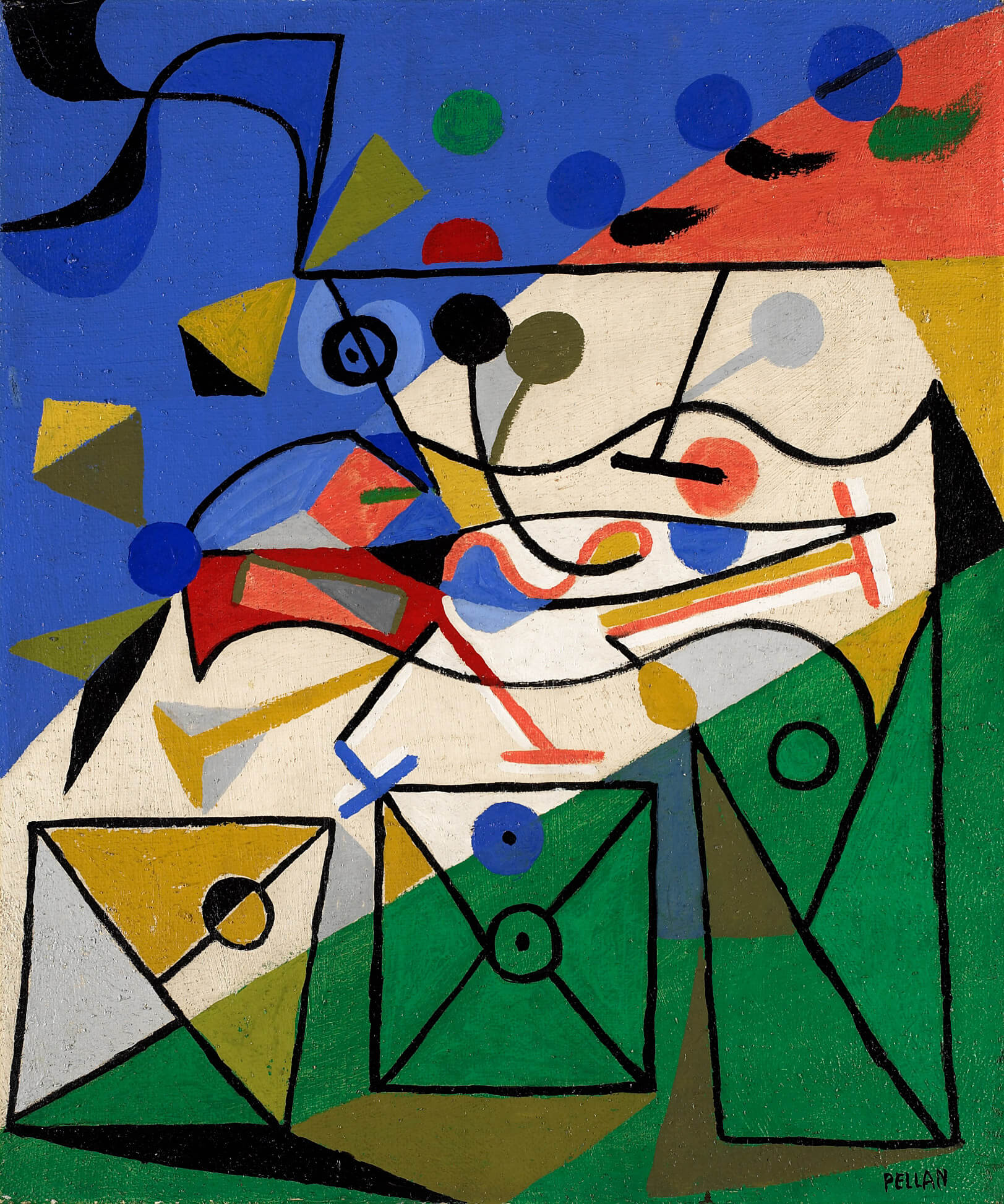
Alfred Pellan, Bouche rieuse (Laughing Mouth), 1935
Oil on burlap, 55.1 x 46 cm
National Gallery of Canada, Ottawa
In Bouche rieuse (Laughing Mouth), Alfred Pellan grafts various shapes on top of three background spaces, each one dominated by a specific colour: blue on the top, shades of ochre in the middle, and various greens on the lower right. Smaller drops of paint create a connection between these three nearly monochromatic sections. These sections are overlaid by stark black lines that upon first glance appear to be freed from the burden of realism, but which are not purely nonrepresentational. In the middle of the painting, these contours come together to create something recognizable: a bird, in which the artist places a large eye. The lines of the animal and the eye may even shape the “laughing mouth” referenced in the title. This composition exemplifies Pellan’s Parisian work in the mid-1930s, showcasing his interest in challenging the binary between representation and abstraction.
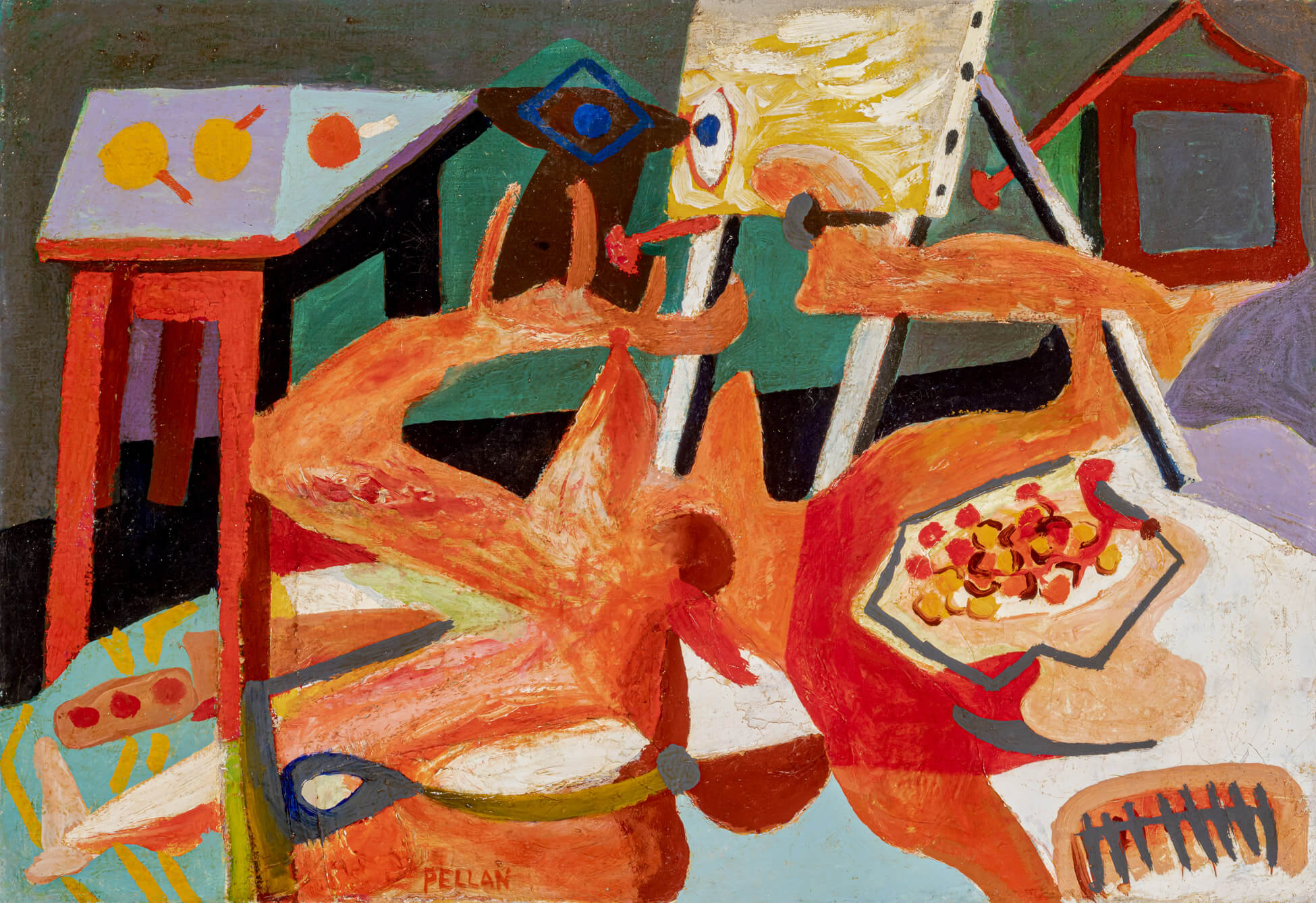
Before his arrival in France, Pellan relied on an academic and realistic style of painting. In Paris, however, he was captivated by Modernist efforts to reinvent existing codes of expression. Inspired by the works of Paul Klee (1879–1940) and Joan Miró (1893–1983), Laughing Mouth skims the edge of abstraction in order to imbue the real with a sense of wonder and poetry. Yet while his works of the 1930s had fewer links to figurative representation, they were by no means entirely abstract. Pure abstraction “was far from his thoughts,” as Pellan felt it caused a kind of creative stasis. In his words, “abstraction is instinctive mathematics, of form, volume and colour in space, it means a purification of the painting by way of geometry.”
Pellan’s work betrays a particular attachment to recreating the human world. “I did a lot of abstraction,” he said in 1952. “Often, I started a canvas in abstract terms and then reality, the human side, began to graft itself on top of it.” It is as if the artist tried to experiment with how much abstraction objects could tolerate before they became completely divorced from any sense of the real.
In Laughing Mouth, the lines are more than the simple outline of a well-defined image; they transform into the very subject of the painting. They break with the linear structure of the space, creating a counter-diagonal movement from the outline of the green “envelope” in the lower-right corner to the curious “windmill” in the upper-left corner. These black lines provide a sense of movement that contrasts with the rigid stalemate of the coloured masses; they create dynamic harmony between the elements.

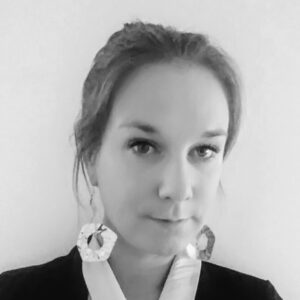 About the Author
About the Author
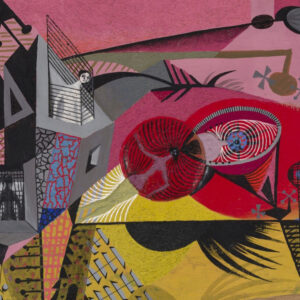 More Online Art Books
More Online Art Books
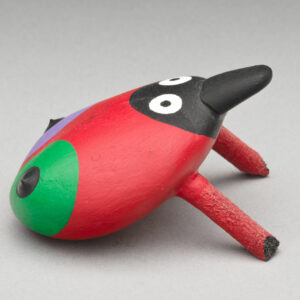 Acknowledgements
Acknowledgements